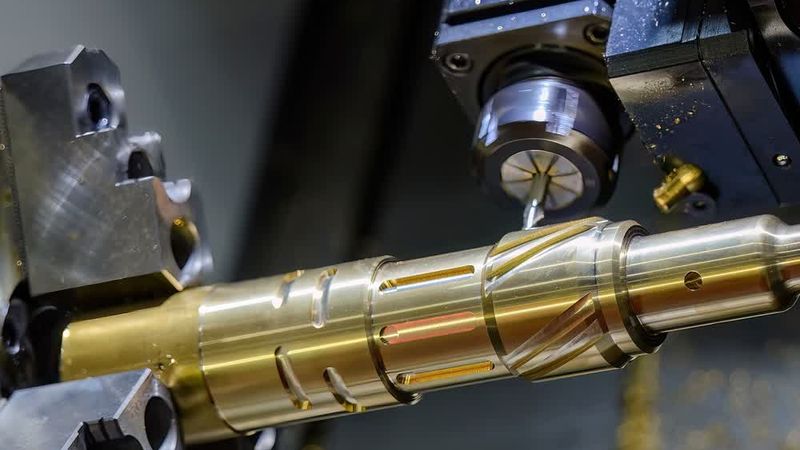What is CNC Turning? Process, Advantages, Applications
What is CNC turning? This digital manufacturing technology, different from CNC milling in a few important ways, is used to make rounded or cylindrical parts with a high level of precision.
Computer Numerical Control (CNC) turning has changed the manufacturing industry, offering new levels of precision and efficiency in producing cylindrical parts. This advanced machining process uses computer-controlled lathes to shape materials with exceptional accuracy.
Evolving from traditional manual lathe machines, CNC turning has elevated machining capabilities, allowing for complex geometries and tight tolerances that were previously not possible. The integration of digital technology has not only enhanced the quality of manufactured components but also significantly improved production speeds and consistency. CNC turning is used in various sectors, from aerospace and automotive to medical device manufacturing.
This article goes over the basics of CNC turning, explaining how it works, its main advantages and uses, and the different turning techniques involved, from facing to knurling.
What is CNC Turning?
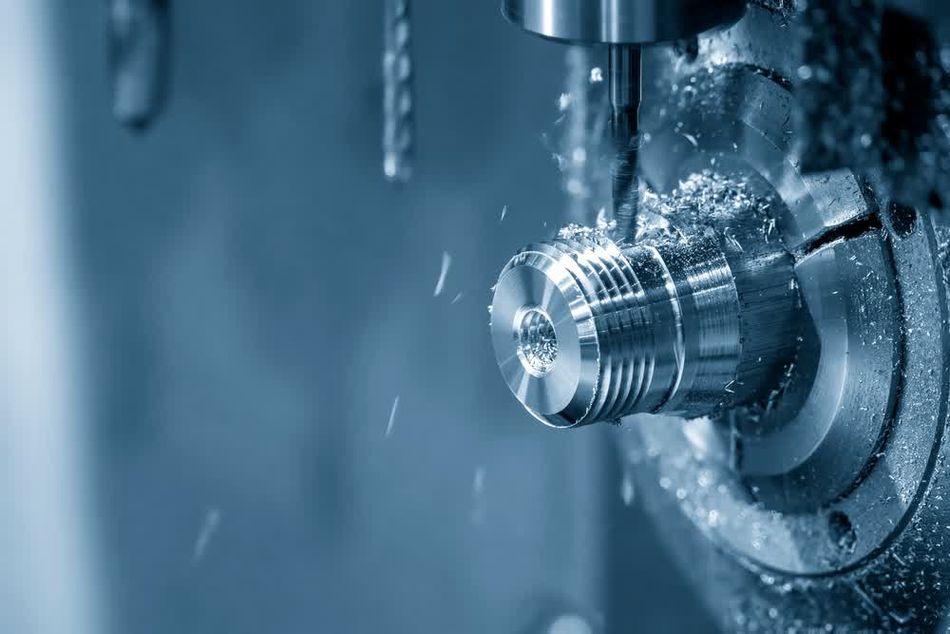
CNC turning is a subtractive manufacturing process that revolves around the principle of material removal from a rotating workpiece. At its core, turning involves the continuous rotation of a workpiece while a stationary cutting tool, typically with a single-point edge, removes material to achieve the desired shape and dimensions.
The relative motion between the workpiece and the cutting tool results in material removal. As the workpiece spins at high speeds, the cutting tool engages with its surface, creating a shearing action that chips away excess material. This process, known as "cutting" or "machining," allows for the creation of cylindrical or conical shapes with high precision.
CNC turning is different from CNC milling because it is generally only used to make cylindrical or oblong parts. Asymmetrical or complex features are typically machined using a mill or machining center.
The CNC Turning Process
In CNC turning, the workpiece is securely held in a chuck, which is attached to the main spindle of the lathe. The spindle rotates at variable speeds, controlled by the CNC system, to ensure optimal cutting conditions for different materials and operations. Unlike a CNC mill, the cutting tool does not rotate but remains mounted on a tool turret or carriage. This configuration allows for precise control over the depth of cut, feed rate, and cutting speed, which are crucial parameters in achieving the desired surface finish and dimensional accuracy.
The CNC system, guided by a pre-programmed set of instructions (G-code), orchestrates the entire machining process. It controls the spindle speed, coordinates the movement of the cutting tool along multiple axes, and manages tool changes for different operations. This computer-driven approach ensures repeatability, minimizes human error, and allows for complex geometries to be machined with high accuracy.
Key technical terms in CNC turning include:
Cutting speed: The rate at which the workpiece surface passes the cutting edge, typically measured in meters per minute (m/min) or surface feet per minute (SFM).
Feed rate: The distance the cutting tool travels into the workpiece per revolution, usually expressed in millimeters per revolution (mm/rev) or inches per revolution (in/rev).
Depth of cut: The thickness of material removed from the workpiece in a single pass, measured perpendicular to the machined surface.
Tool geometry: The shape and angles of the cutting tool, including rake angle, clearance angle, and nose radius, which affect cutting performance and surface finish.
Chip formation: The process by which material is removed from the workpiece, creating chips or swarf that must be efficiently evacuated from the cutting zone.
By manipulating parameters through computer control, CNC turning can achieve a wide range of operations, from rough cutting to fine finishing, on a variety of materials. This precise control over the machining process enables the production of complex parts with tight tolerances, making CNC turning a cornerstone of modern manufacturing.
Recommended reading: Electrical Discharge Machining (EDM): The Ultimate Guide
CNC Turning Operations
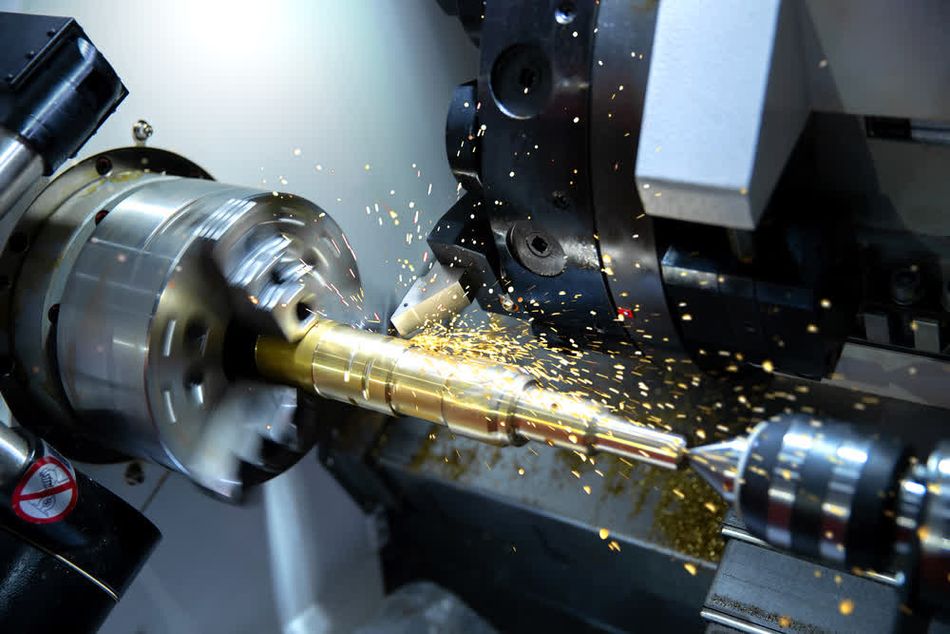
Various CNC turning operations are used to achieve specific geometries, dimensions, and finishes on the workpiece. Here are some of the common CNC turning operations:
1. Facing
Facing is the process of removing material from the end of the workpiece to create a flat surface perpendicular to the workpiece's axis. This operation is typically the first step in the turning process, providing a reference surface for subsequent operations. The cutting tool moves radially across the end of the rotating workpiece to achieve the desired flatness and surface finish.
2. Tapered Turning
Taper turning involves machining a conical shape on the workpiece. This is achieved by gradually changing the diameter of the workpiece along its length. Tapered turning can be performed by adjusting the angle of the tool path relative to the workpiece's axis or by offsetting the tailstock or using a taper attachment. Tapered components are commonly used in applications requiring precise fits, such as Morse taper shafts and tool holders.
3. Parallel Turning
Parallel turning, also known as straight turning, involves machining the workpiece's outer surface to achieve a uniform diameter along its length. This operation is fundamental to producing cylindrical parts and can be performed using various cutting tools and strategies to achieve the desired surface finish and dimensional accuracy.
4. Parting and Grooving
Parting, also known as cutoff, is the process of cutting off a section of the workpiece. This is typically done at the end of the turning process to separate the finished part from the remaining stock. Grooving involves creating a narrow, recessed area on the workpiece surface, often used for applications like O-ring seats and retaining rings. Specialized parting and grooving tools are used to achieve these operations.
5. Threading
Threading is the process of cutting helical grooves around the cylindrical workpiece to create screw threads. This can be achieved using single-point cutting tools or threading inserts. CNC lathes can produce both internal and external threads with high precision. Threading operations are critical in manufacturing fasteners, threaded rods, and other components requiring screw threads.
6. Boring
Boring is the internal machining process that enlarges an existing hole or cylindrical cavity within the workpiece. This operation can achieve precise diameters and finishes for internal surfaces. Boring is often used to refine pre-drilled or cast holes to meet specific tolerances and is essential in producing components like bushings, bearings, and internal threads.
7. Drilling
Drilling involves creating cylindrical holes in the workpiece using a cutting tool known as a drill bit. CNC turning centers can perform drilling operations along the workpiece's axis or at specified angles using live tooling or multiple tool turrets. Drilling is often combined with other turning operations to create complex features.
8. Knurling
Knurling is a surface finishing process that creates a textured pattern on the workpiece's surface, usually for improved grip or aesthetic purposes. This is achieved using a knurling tool that presses a pattern into the rotating workpiece. Knurling patterns can be straight, diagonal, or diamond-shaped, and are commonly found on handles, knobs, and fasteners.
9. Profiling
Profiling involves machining complex curves, contours, and shapes on the workpiece's surface. This operation requires precise control of the cutting tool path to achieve the desired profile. Profiling is used in manufacturing components with intricate geometries, such as camshafts, turbine blades, and custom-designed parts.
10. Reaming
Reaming is a finishing operation used to refine and enlarge previously drilled or bored holes to precise diameters and smooth finishes. Reamers, which are specialized multi-edge cutting tools, remove a small amount of material to achieve the desired tolerances. Reaming ensures tight fits and high-quality finishes in applications like precision bearings and alignment sleeves.
CNC Turning Machines
CNC turning machines are sophisticated pieces of equipment that have evolved from lathes. The addition of digital components increases precision and production capacity.
The main parts of a CNC turning machine include:
Headstock: Houses the main spindle and drive system. It's the power center of the machine, controlling the spindle's rotation speed and direction.
Chuck: Mounted on the main spindle, it securely holds the workpiece during machining operations.
Spindle: The rotating element that holds and turns the workpiece. It's crucial for achieving the desired cutting speed and maintaining accuracy.
Turret: A rotating tool holder that can accommodate multiple cutting tools, allowing for quick tool changes during the machining process.[1]
Tailstock: Provides additional support for long workpieces, reducing deflection and vibration during machining.
CNC Control Panel: The brain of the machine, where operators input and manage the computer programs that guide the machining process.
Bed: The foundation of the machine, supporting all other components and ensuring overall stability and alignment.
Carriage: Moves along the bed, carrying the cutting tools and controlling their position relative to the workpiece.
Coolant System: Delivers coolant to the cutting area to reduce heat and improve tool life and surface finish.
Some of the major manufacturers of CNC turning machines or CNC turning centers include DMG MORI, Mazak, and Haas Automation. These companies also make CNC milling machines and multi-axis machining centers.
Live Tooling
Live tooling has emerged as a game-changing feature in CNC turning. This technology allows for milling, drilling, and other operations — those typically performed on a CNC mill or machining center — to be performed on the workpiece while it remains in orientation to the main spindle.[2] Live tools are power-driven cutting tools that can rotate independently of the spindle, enabling operations that are not parallel to the spindle axis.
The benefits of live tooling include reduced setup times and handling of parts, improved accuracy due to single-setup machining, and increased productivity and flexibility.
Other Advanced Features
The integration of Artificial Intelligence (AI) and Internet of Things (IoT) technologies is transforming CNC turning machines into smart, connected systems. AI algorithms can optimize cutting parameters, predict tool wear, and adjust machining strategies in real-time, leading to improved part quality and reduced waste. IoT connectivity allows for remote monitoring, predictive maintenance, and data-driven decision-making, enhancing overall operational efficiency.
Modern CNC lathes are not just machines; they are sophisticated systems that integrate cutting-edge hardware with intelligent software, pushing the boundaries of what's possible in precision manufacturing.
Recommended reading: What is Die Casting? A Technical Perspective Guide for Engineers
Typical CNC Turning Workflow
The journey from a conceptual design to a finished product in CNC turning involves a series of steps, from part design to toolpath generation to quality control.
Design: The process begins with creating a detailed 3D model of the part using Computer-Aided Design (CAD) software. This digital representation serves as the blueprint for the entire manufacturing process, allowing engineers to visualize and refine the design before any physical work begins.
CAD to CAM Conversion: Once the CAD model is finalized, it's imported into Computer-Aided Manufacturing (CAM) software. This step bridges the gap between design and production, translating the 3D model into a format that CNC machines can interpret.
Toolpath Generation: Within the CAM software, machinists define the toolpaths, the precise routes that cutting tools will follow to shape the workpiece. This step involves specifying cutting speeds, feed rates, and tool changes, optimizing the machining process for efficiency and quality.
G-code Generation: The CAM software then converts the toolpaths into G-code, the programming language that CNC machines understand. G-code consists of a series of alphanumeric commands that control the machine's movements, spindle speeds, and other functions.
Program Simulation: Before running the actual machine, the G-code program is simulated in the CAM software. This crucial step allows for the detection and correction of potential errors or collisions, ensuring a smooth machining process.
Program Transfer: The verified G-code program is then transferred to the CNC machine, typically via USB, network connection, or direct numerical control (DNC).
Machine Setup: The CNC lathe is prepared for the job, including mounting the workpiece, setting up the required cutting tools, and establishing the work coordinate system.
Program Execution: The CNC machine executes the G-code instructions, precisely controlling the movement of the cutting tools relative to the rotating workpiece to create the desired shape.
Quality Control: After machining, the part undergoes inspection to ensure it meets the specified dimensions and tolerances.
Applications of CNC Turning
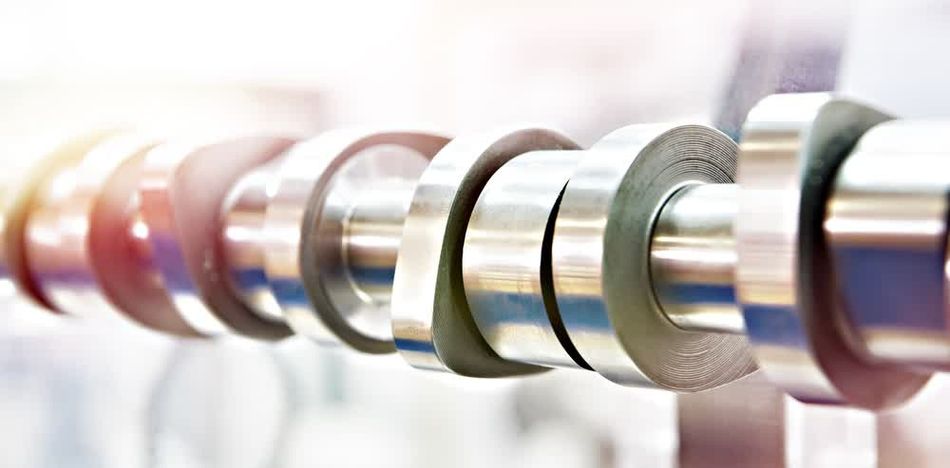
CNC turning enables the production of complex, high-precision cylindrical or axially symmetrical parts. It is used in a number of industries, from aerospace and automotive to medical parts production. The table below shows some rounded, cylindrical, or oblong parts suited to the process.
Industry | Example Parts |
Aerospace | Shafts, bushings, hydraulic fittings |
Automotive | Axles, drive shafts, camshafts, crankshafts[3] |
Medical | Implants, surgical instruments, fasteners |
Oil and Gas | Valves, pump parts, hydraulic fittings |
Electronics | Terminas, connectors, housings |
CNC turning's ability to produce a wide range of parts with high precision and repeatability has not only improved product quality across these industries but has also enabled innovations in design and functionality that were previously unattainable.
Key Benefits of CNC Turning
CNC turning offers advantages over both manual lathe turning and other manufacturing technologies. Some of the benefits of CNC turning are listed below.
Precision: CNC turning machines can achieve tolerances as tight as ±0.0001 inches (2.54 microns), surpassing the capabilities of manual lathes.
Repeatability: Once programmed, CNC lathes can produce identical parts with consistent quality, regardless of the production run size.
Complex Geometry Capabilities: Although less versatile than milling, CNC turning can create intricate shapes and features that would be difficult to achieve with manual turning.
Reduced Human Error: By minimizing human intervention in the machining process, CNC turning greatly reduces the risk of errors associated with manual operations, leading to fewer defects and less waste.
Improved Surface Finish: CNC turning can achieve superior surface finishes compared to manual methods, often eliminating the need for secondary finishing operations and further reducing production time and costs.
Integration with CAD/CAM Systems: CNC turning seamlessly integrates with computer-aided design (CAD) and computer-aided manufacturing (CAM) software, streamlining the entire production process from design to finished product.
Enhanced Safety: By reducing the need for manual intervention during machining operations, CNC turning improves workplace safety, minimizing the risk of accidents associated with traditional lathe operation.
The advantages of CNC turning have made it an indispensable technology in modern manufacturing, enabling companies to maintain a competitive edge in an increasingly demanding global market.
CNC Turning Materials
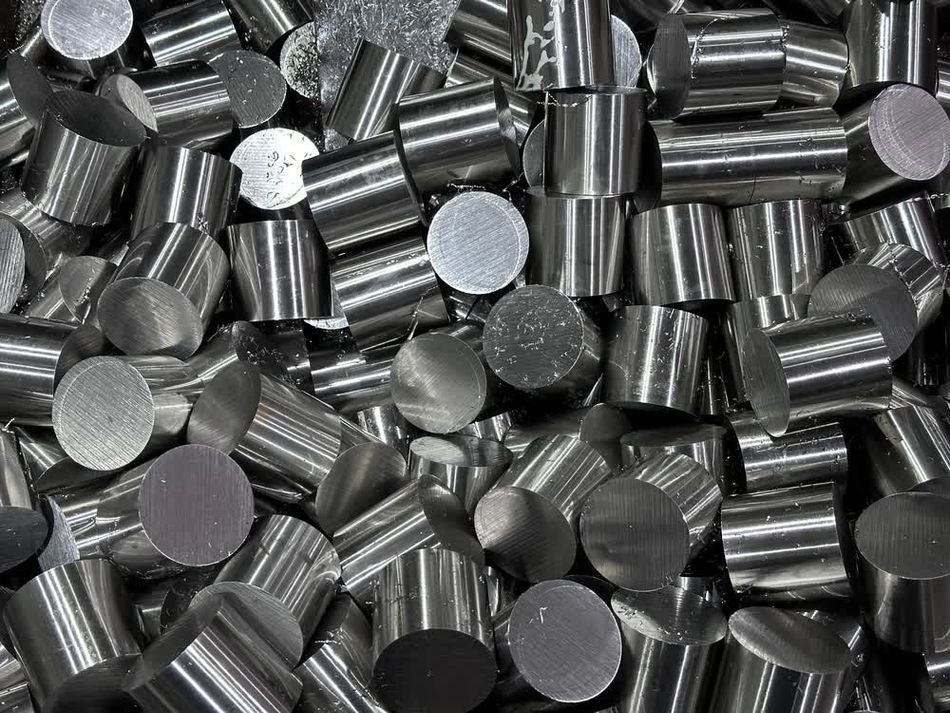
Materials suited to CNC turning are similar to those suited to other machining operations. Common materials used in CNC turning include various metals and plastics, each with unique properties that affect their machinability and suitability for specific applications.
Metals such as aluminum, steel, stainless steel, brass, and titanium are frequently used in CNC turning. Aluminum alloys, particularly 6061-T6, are popular due to their excellent machinability, light weight, and good strength-to-weight ratio. Steels offer high strength and durability but can be more challenging to machine due to their hardness. Stainless steel provides corrosion resistance but may require specialized tooling and slower cutting speeds. Brass is known for its ease of machining and good electrical conductivity, while titanium offers exceptional strength-to-weight ratio but is difficult to machine.
Plastics like ABS, acrylic, polycarbonate, and PEEK are also commonly used in CNC turning. These materials offer advantages such as light weight, chemical resistance, and electrical insulation properties. However, they present unique challenges in machining, including lower melting points and tendency to deform under heat and pressure.
The choice of raw material affects machining parameters and tool selection. For instance, harder materials like titanium or hardened steels require more robust cutting tools, often with specialized coatings to withstand the high temperatures and forces involved. Softer materials like aluminum or plastics may allow for higher cutting speeds but require careful consideration of chip formation and evacuation.
Recommended reading: 3D Printing Titanium: Best Processes, Alloys, Applications
Conclusion
CNC turning offers unparalleled precision, efficiency, and versatility in producing cylindrical machined parts. From its core components to advanced features like multi-axis machining and live tooling, CNC turning has become an indispensable technology across various industries such as aerospace, automotive, and medical devices.
The future of CNC turning could see greater implementation of cutting-edge technologies like artificial intelligence. Integration of artificial intelligence and machine learning algorithms promises to optimize machining parameters in real-time, further improving efficiency and quality. Meanwhile, advancements in materials science may lead to the development of improved cutting tools and techniques, expanding the range of machinable materials and pushing the boundaries of what's possible in CNC turning.
Frequently Asked Questions (FAQ)
What is CNC turning and how does it differ from manual turning?
CNC turning is a machining process that uses computer-controlled lathes to remove material from a rotating workpiece. Unlike manual turning, CNC turning offers higher precision, repeatability, and the ability to produce complex parts consistently without constant operator intervention.
What materials can be machined using CNC turning?
CNC turning can machine a wide range of materials, including various metals (such as steel, aluminum, brass, and titanium), plastics, and even some composites. The choice of material depends on the specific application and desired properties of the final product.
What is live tooling in CNC turning, and what are its benefits?
Live tooling refers to powered rotary tools used in CNC turning centers. It allows for milling, drilling, and other operations to be performed on the workpiece while it's mounted in the lathe. This capability reduces the need for multiple setups, improves accuracy, and increases overall productivity.
What are some common challenges in CNC turning, and how can they be addressed?
Common challenges include tool wear, vibration, and dimensional inaccuracies. These can be addressed through proper tool selection, optimized cutting parameters, regular machine maintenance, and careful monitoring of the machining process. Advanced features like in-process measurement and adaptive control systems can also help mitigate these issues.
What future trends are expected in CNC turning technology?
Future trends in CNC turning include increased integration of AI and machine learning for process optimization, development of hybrid manufacturing systems combining additive and subtractive processes, enhanced automation and robotics for part handling, and the use of advanced sensors and IoT technology for predictive maintenance and real-time process monitoring.
References
[1] Liu M, Ding X, Yan Y, Ci X. Study on optimal path changing tools in CNC turret typing machine based on genetic algorithm. InComputer and Computing Technologies in Agriculture IV: 4th IFIP TC 12 Conference, CCTA 2010, Nanchang, China, October 22-25, 2010, Selected Papers, Part IV 4 2011 (pp. 345-354). Springer Berlin Heidelberg.
[2] Hansen P. Live Tooling: Basic Concepts, Recent Developments. Manufacturing Engineering. 2020 May 1;164(5):18-9.
[3] Kalchenko V, Kalchenko V, Sira N, Kuzhelnyi Y, Sklyar V. Model of milling the root and connecting rod necks of the crankshaft for one manufacturing process. InGrabchenko’s International Conference on Advanced Manufacturing Processes 2021 Sep 7 (pp. 160-169). Cham: Springer International Publishing.
Table of Contents
What is CNC Turning?The CNC Turning ProcessCNC Turning Operations1. Facing2. Tapered Turning3. Parallel Turning4. Parting and Grooving5. Threading6. Boring7. Drilling8. Knurling9. Profiling10. ReamingCNC Turning MachinesLive ToolingOther Advanced FeaturesTypical CNC Turning WorkflowApplications of CNC TurningKey Benefits of CNC TurningCNC Turning MaterialsConclusionFrequently Asked Questions (FAQ)References
